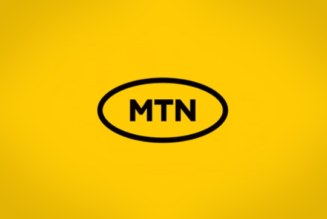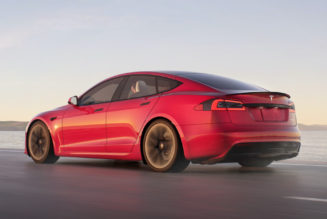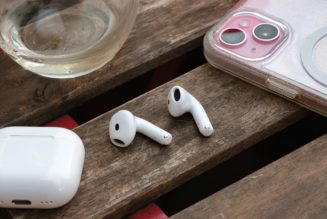Google is revealing a phone this year where it’s pulling out all the stops and going big on a cutting-edge, in-house designed SoC, upgraded camera specs, and a bold new look.
That phone is not the Pixel 5A.
If those kinds of show-stopping improvements are what you’re looking for, then I’d like to point you to the Pixel 6, coming this fall. The new Pixel 5A on the other hand, is kind of a boring update by comparison. The screen is a bit bigger this time around, there’s an IP rating for water resistance, and the battery gets a decent boost. That’s about it.
Here’s the thing, though: the Pixel 4A and 4A 5G were already really good midrange phones, and rather than messing with a winning formula, Google has made some strategic tweaks to keep the 5A at the top of its class. Even better, the 5A costs $449 — $50 less than the 4A 5G’s introductory price.
The Pixel 5A is good, but it’s not exactly a slam dunk. There are a few drawbacks to note: its security support policy is good but not class-leading. It’s also weirdly missing software-level support for C-band 5G frequencies that US carriers will start using over the next few years. It’s only being released in the US and Japan, and even in the US it’s not being sold through the major carriers.
But all things considered, Google has managed to address some of the weak points in its previous A-series models while also bringing the price down. Not bad for a boring update.
:no_upscale()/cdn.vox-cdn.com/uploads/chorus_asset/file/22781449/ajohnson_210813_4713_0004.jpg)
Google Pixel 5A screen, performance, and battery
The Pixel 5A uses a 6.34-inch 1080p OLED screen, which is a bit bigger than the 6.2-inch screen on the 4A 5G. That’s not huge by any means, especially compared to the 6.5-inch-and-beyond panels that are common on budget Android phones. It also uses a standard 60Hz refresh rate, so you don’t get the smoother scrolling experience of faster 90 or 120Hz rates. That’s a feature that’s been steadily trickling down from the flagship class and is available in devices around the 5A’s price, from the $300 OnePlus N10 5G’s 90Hz screen up to the $500 Galaxy A52 5G’s 120Hz panel.
So the 5A’s screen isn’t a standout, but it is big enough that it doesn’t look quite as out of place next to the competition compared to the 4A and 4A 5G. It’s also just a good quality screen — the OLED technology delivers rich contrast, and it’s bright enough to be viewable outside in direct sun without too much effort. The same can’t be said of some of its competitors’ screens, big as they may be.
There’s no change to the processing or memory specs from the 4A 5G: the Pixel 5A uses the same Snapdragon 765G chipset with 6GB of RAM and 128GB of storage. Apps open quickly, and I didn’t notice any significant delays or hiccups going about my daily tasks and social media scrolling.
Complex image processing tasks are also carried out in a second or two, and that happens in the background so you can keep taking portrait mode photos without having to wait for every frame to finish processing. As someone who takes too many portrait mode photos of her cat in hopes of getting just the right shot, I truly appreciate that.
The jump in battery life compared to its predecessor is a bigger story for the Pixel 5A. It gets a 4,680mAh cell compared to the 4A 5G’s 3,885mAh. That’s much closer to the 5,000mAh batteries that are common among the competition. Google calls it “all day” performance, with up to 48 hours of stamina if you turn on extreme battery saver.
I got better results in my real-world testing — a day of moderate use including around three hours of screentime typically drained it down to only 70 percent. Heavy users should comfortably get a day out of the battery, and if you’re a lighter user who spends more time on Wi-Fi, you can expect to get 48 hours even without battery saver enabled.
:no_upscale()/cdn.vox-cdn.com/uploads/chorus_asset/file/22781452/ajohnson_210813_4713_0007.jpg)
Google Pixel 5A IP rating and build quality
The Pixel 5A includes an IP67 dust and waterproof rating, meaning it can be submerged in about three feet of water for up to 30 minutes. Official IP ratings are rare in the $500-and-under bracket outside of the Samsung A52 5G and iPhone SE, so this is one area where the 5A rises to the top of the class.
On the front panel there’s Gorilla Glass 6 for screen protection and underneath, the phone’s outer plastic shell is a metal unibody. The plastic panel features a matte finish that I appreciate — it’s less slippery than a glossy finish and doesn’t show smudges as easily.
There’s just one color option this year: black. You can spice things up with one of the colorful case options, which are designed for added protection against drops and bumps. Some are more neutral, like “black moss” and “maybe moon” (and also sound like Neko Case song titles?), but I opted for “likely lime” with my review unit and, reader, I do not like it. There’s a subtle 1990’s Nickelodeon vibe about it. Give me the fabric case back, please.
:no_upscale()/cdn.vox-cdn.com/uploads/chorus_asset/file/22781446/ajohnson_210813_4713_0001.jpg)
Google Pixel 5A software and 5G connectivity
The 5A ships with Android 11 and is backed by Google’s typical three-year OS and security update policy. That’s a longer shelf life than most budget phones, but Samsung recently started offering four years of security updates with its budget A-series devices, and Apple will offer its latest OS upgrade to the six-year-old iPhone 6S this fall.
There’s also, of course, 5G connectivity on the Pixel 5A. It supports sub-6GHz 5G on all of the major US carriers, and unlike the 4A 5G, won’t be sold in a mmWave-compatible variant. Verizon insists on selling phones that can connect with its super-fast, hard-to-find mmWave 5G network so, like many other device manufacturers, Google came up with a more expensive version of the 4A 5G compatible with the network for Verizon’s retail shelves. That’s not happening this time around and nobody will miss it.
mmWave 5G is no great loss, but the 5A’s lack of C-band support at launch is more worrisome. C-band is the good mid-band stuff that carriers will gradually begin adding at the end of this year and over the next few years. The Pixel 5A has the hardware support and FCC certification to use C-band, but Google hasn’t enabled software-level support for these frequencies. It could add support in the future, but isn’t committing to doing so.
There are numerous budget and midrange phones on sale right now that fully support C-band, starting as low as the $279 Galaxy A32, so it’s odd that Google won’t commit to supporting it. T-Mobile customers don’t need to worry as much since it won’t be relying much on C-band. But if you’re on Verizon or AT&T and you plan to keep using your phone for the next two to three years, this could become a real drawback as those carriers enable C-band and (in theory) strengthen their 5G networks.
:no_upscale()/cdn.vox-cdn.com/uploads/chorus_asset/file/22781450/ajohnson_210813_4713_0005.jpg)
Google Pixel 5A camera
The 5A’s camera hardware is another place where it doesn’t look especially exciting on paper, but it adds up to much more than the sum of its specs. The 12.2-megapixel main rear camera includes optical image stabilization, which is hard to find under $500. This kind of lens-based stabilization helps ensure more of your shots are sharp, which is especially handy in dimmer light conditions.
That camera is accompanied by a 16-megapixel ultrawide, and there’s an 8-megapixel selfie camera. This might not seem like much next to the triple- and quad- rear camera arrays on other phones, but those third and fourth cameras are usually low-quality macro and depth sensors that aren’t actually very useful anyway.
If those specs sound familiar, that’s because it’s the same hardware as the Pixel 5 and Pixel 4A 5G, and that’s actually fine for this model. Even without new sensors or lenses, the 5A still offers the best photo quality in the midrange class, thanks largely of course to Google’s smart image processing. Plenty of the Pixel 5A’s competitors can take good photos in bright outdoor light, but Google is still the low light champion in the budget class.
Unsurprisingly, what was true of the 4A and 5’s image capabilities is also true of the 5A. It handles high contrast scenes well, and colors are rendered a bit more naturally than you’ll get from a Samsung phone. Portrait and night mode photos are among the best you can get from a midrange phone, though you can certainly spot their limitations with trickier subjects. Google has more work cut out for itself in equipping the Pixel 6 to stay competitive with the Samsung and Apple flagships of the world. In the budget class, it can afford to stand still for another year just because it got such a good running start.
:no_upscale()/cdn.vox-cdn.com/uploads/chorus_asset/file/22781448/ajohnson_210813_4713_0003.jpg)
There are $400 and $500 phones with flashier standout features than the Google Pixel 5A. The Samsung Galaxy A52 5G features a big 6.5-inch screen with 120Hz refresh rate. The TCL 20 Pro offers a flagship-esque curved display and wireless charging. The Motorola Moto G Stylus includes a huge display and (of course) a stylus.
But the Pixel 5A is just a good all-arounder with a great UI, speedy software updates, and all of the basics covered at a reasonable price. The 4A 5G was already a good phone, and the 5A’s smart improvements like waterproofing and a bigger battery make it easier than ever to recommend this phone to a wide range of people.
There’s the unfortunate case of C-band 5G and whether Google will add support for it in the future. It’s hard to imagine the company refusing to support it once the frequencies are in wide use, but we’re firm believers that you shouldn’t buy a gadget today based on a potential update tomorrow. Verizon and AT&T customers should take that into consideration.
It’s a shame that the Pixel 5A will see such a limited release, both in terms of countries where it will be available and where it will (and won’t) be sold in the US, because it’s a phone I’d recommend to a lot of people. It exceeds the competition in a few ways, like its class-leading camera and waterproofing, and meets it in others, like its just-big-enough screen and improved battery life.
With its more limited availability, it seems likely to become an “if you know you know” kind of device rather than the phone you tell your uncle to buy when he asks you what to get with his two-year carrier upgrade deal. That’s too bad, because this is a very boring, very good phone that I think a lot of people would like.
Photography by Allison Johnson / The Verge







